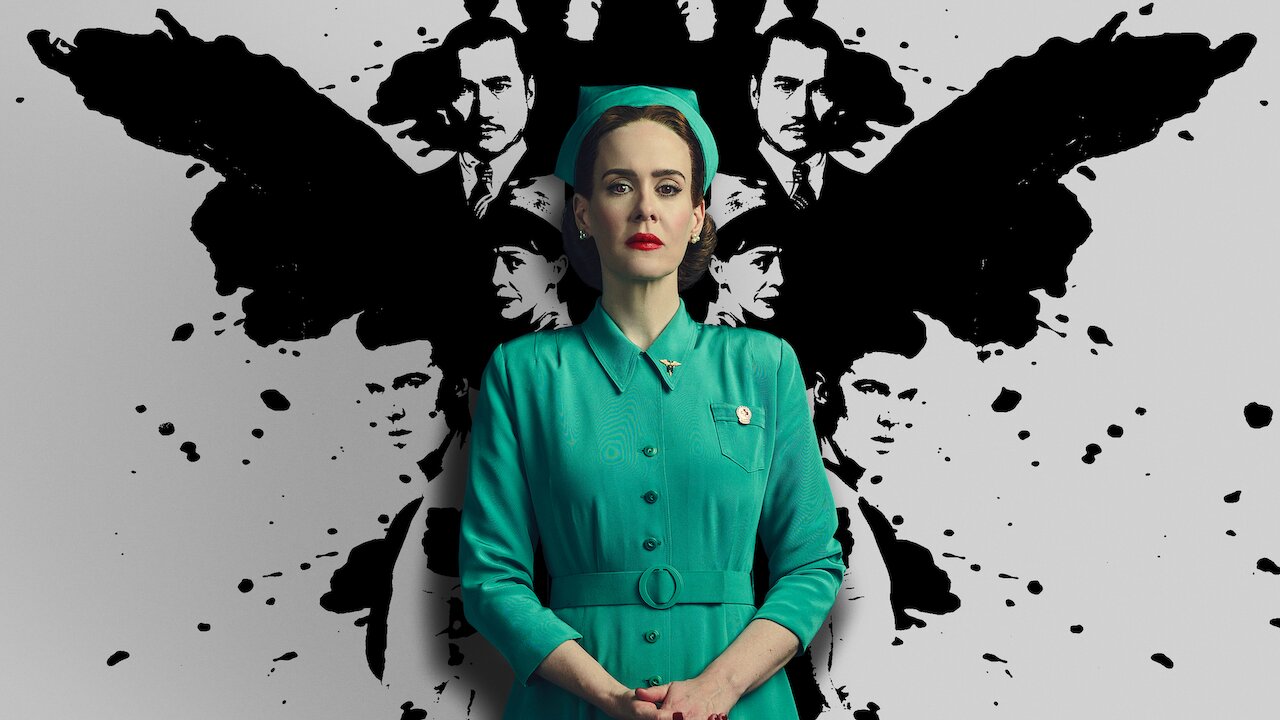“She’s A Peach”: A Review of Ryan Murphy’s Ratched
Ryan Murphy’s Ratched (2020) is a wicked and deliciously entertaining television show to watch. Both spooky and stylish, this series is reminiscent of a suspenseful Alfred Hitchcock film but includes an inherently feminine, queer, and malevolent perspective along with breathtaking costumes and colourful eye-popping visuals. Namely, the series is carried by a strong team of actresses that include Sarah Paulson, Judy Davis, Cynthia Nixon, Sophie Okonedo, and Sharon Stone.
Ratched is an imaginative origin story inspired by the character Nurse Mildred Ratched from the film One Flew Over the Cuckoo’s Nest (1975) that is based on the novel of the same name by Ken Kesey. Throughout the series, we see Nurse Mildred Ratched (Sarah Paulson) connive her way into becoming head nurse at the Lucia State Psychiatric Hospital in 1947 California.
The opening title sequence alone is simply gorgeous and worth watching. The interesting contrast between the scary themes and the gorgeous Technicolor-Esque cinematography makes the series look visually appealing at its surface but quickly reveals its disturbing themes. This duality in the series is most recognizable in the psychological characterization of protagonist Mildred Ratched. The series slowly reveals how the meticulously glamorous Mildred Ratched became so jaded and cruel toward her patients. This duality is perhaps perfectly embodied by a peach—a single peach that became the iconic visual motif of the series after a hostile scene between Mildred Ratched and Nurse Betsy Bucket. In this scene, Bucket threatens to eat Ratched’s peach in the staff kitchen at the hospital, which Ratched claims is hers. After Bucket decides to eat it anyway, Ratched channels some unmatched menacing energy—and needless to say, she is not pleased. The metaphor of the peach directly relates to Mildred’s psychology—appearing sweet on the outside with a dark, hard pit on the inside.
Ratched reminds audiences of the horrific and barbaric medical and mental health practices used in psychiatric care in the 1940s and onwards—some practices which unfortunately are still used today. Trigger warning for the series: procedures like lobotomies and different forms of gay conversion therapy are performed. This in turn is what makes the series so terrifying at its core as these psychiatric procedures are a huge part of human history, both past and present.
The series is reminiscent of American Horror Story: Asylum (2012), as this is not director Ryan Murphy’s first time making a horror television show. He often casts the same actors and pushes the boundaries of the characters he creates to the utmost degree—and Ratched is no exception. These characters’ motivations are strong, and they will do almost anything to get what they want, which is always fun to watch.
Ratched is not meant to be a truthful portrayal of the past, but rather an imaginative retelling of what could have happened. The series is by no means perfect, as a few characters in the series who suffer from an array of mental illnesses may be performative and potentially harmful to those who actually struggle with these illnesses today. Moreover, the ending—without spoiling it—is predictable and lends itself to the strong possibility of a second season. The first season wraps up in a way that is satisfying but still leaves room for more.The strengths that Ratched exhibits as a television series lends itself to the genius departments of costuming, makeup, special effects, production design, art direction, and set decoration. So if you’re craving something glamorous and spooky to watch this season, I recommend Ratched.
